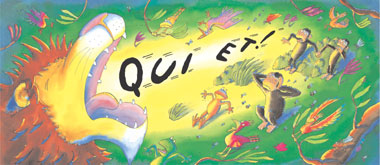THE BEACH
          Blankets                              picnic basket                        beach umbrella
          Sunglasses                           beach ball                            pretend suntan lotion
          Beach towel                         buckets and shovels             shells
          Lawn chairs                         straw hats                            play picnic foods
          Beach Boys music               swimming caps                    surfboard
          Snorkels                              fins                                     flip flops
Â
Â
FLOWER SHOP
          Plastic flowers                     watering can                        seeds
          Florist smock                       flower/garden magazines      garden hats
          Small garden tools               potting soil                          vases
          Garden gloves                      ribbon                                 order book and pen
          Cash register/money            phone                                  plastic pots
          Styrofoam squares               baskets                    Â
         Â
Â
RESTAURANT
          Tablecloth                           napkins                               dishes
          Tablewear                            menus (made w/ food pics)   order pads/pencils
          Sign for restaurant               aprons                                 hats
          Cash register                        trays                                    play food
         Â
Â
VETERINARIAN
          Stuffed animals                   cotton balls                          gauze
          Surgical masks                     pamphlets on animals                     plastic gloves
          Play money                         needless syringes                 exam table
          Empty medicine bottles       pet brushes                          white lab coat
          Pet carriers                          magnifying glass                  stethoscope              Â
Â
                                                                                                                                                                                                                                                                                                           ca00
FIREFIGHTER
          Yellow rubber raincoats       boots                                   old vacuum hose
          Phone                                  whistle                                           fire hats
          stepladder                            flashlight                             fire safety posters
          walkie-talkies                       gloves                                  baby dolls (to rescue)
Â
Â
PLUMBER
          Piping – all lengths, widths, shapes, sizes                         tools
          Toolbox                               measuring devices                spigots
          Plungers                              hose/nozzles                        hardware store flyers
          Old shirt (w/ logo on pocket)
Â
Â
TOURIST/VACTION
          Suitcases                             ‘tickets’                               sunglasses
          Maps                                   Hawaiian shirts                    ‘passports’
          ‘travelers checks’/money      postcards                             travel magazines
          camera
Â
Â
BAKERY
          Fresh playdough                  measuring spoons                rolling pins
          Aprons                                           oven mits                            cookie sheets
          Pictures of baked goods        chef’s hat                            muffin tins
          Cake pans                            mixing bowls                       spoons
          Cake decorators                   order pads                            ‘recipes’
          Cookie cutters                     flour shaker                         cupcake papers
         Â
Â
POST OFFICE
          Envelopes                            postcards                             stamps (seals/stickers)
          Boxes or packages                dufflebag                             junk mail
          ‘mailbox’                             scale                                    mailperson hat
          stickers                                paper punch                         cash register
          old blue shirt                       cash register                        pens, pencils, paper
Â
Â
FISHING
          Boat (box)                           Styrofoam packing ‘worms’ net
          Tackle box                           sinkers/bobbers                    fishing hat
          Pole w/ string, magnets        ‘fish’ (w/ magnets)              binoculars
          Fishing magazines               camera                                thermos
CAMPING/FOREST RANGER
          Canteen                               flashlight                             ‘tent’
          Knapsack                             grill                                     fake campfire
          Sticks w/ marshmallows       binoculars                            small skillet
          Mosquito-netting                 nature books                        food supplies
          Sleeping bags                       thermos                               fishing poles
          Fly swatter                          plastic ants                          small cooler
          Lawn furniture                    orange vests                         paper plates
Â
Â
HOUSE PAINTER
          Smocks                               paint brushes                       paint rollers
          Buckets of water (‘paint’)   rags                                     paint trays
          Cap                                     old shirts                             step ladder
          Paint color sample wheels
Â
Â
ASTRONAUT
          Helmet                                           ‘airtank’                              earphones
          Globe                                  ‘control panel’                                moonboots
          Flag                                     ‘moonrocks’                        walkie-talkies
          Star decals                           a ‘rocketship’                      ‘food’ in plastic bags
         Â
Â
OPTOMITRIST
        Eye chart                             pointer                                glasses (frames)
          Table mirror                        white lab coat                      glass cases    Â
          Wooden spoon (for covering one eye to read chart)           pictures of eyes
Â
Â
JEWELRY STORE
          Old jewelry (check for safety) necklaces, bracelets, rings, clip-on earrings
cash register                        play money                          ‘display case’
          Jewelry boxes                      small mirrors                      Â
Â
Â
SHOE STORE
          Lots of shoes                       shoe boxes                           cash register
          Play money                         ruler or foot measurer          shoestrings
          Shoe horn                            sacks                                   pictures of shoes
          Hook w/ service numbers     small chairs                         full-length mirror
          Shoe polish (empty)             order pad                             extra shoe laces
                                                                                                                       Â
 ca00
DOCTOR/NURSE
          Paper nurse’s hats                surgical masks/booties          stethoscope
          Cotton balls                         Band aids                            telephone
          Scale                                   white aprons or lab coat       small flashlight
          Hot water bottle                   gauze                                  rubber gloves
          Dolls/doll beds                     syringes (w/o needles)                     empty medicine bottle
          Hospital ‘gown’                   doctor bag                           x-rays
          Thermometer                       RX pad/files                         old crutches (small)
Â
Â
WEDDING
          White dresses                      veil or lace curtain               Bride magazines
          Wedding ‘cake’                    rings                                    bow ties
          Flowers                               paper to make invites           white dress up shoes
          Suit                                     decorations                          black clergy ‘robe’
          Wedding pictures                 camera                                    “Just Married†sign
Â
Â
HAIR STYLIST
          Plastic combs                       mirrors                                           hairpins
          Rollers                                 spray bottles                        barrettes
          Appointment book               plastic capes                        brushes
          Hair dryer (w/ cord cut off)   magazines                           play money
          Curling irons (cord cut off)  empty shampoo bottles        ribbons
          Posters of hair styles            telephone                            hair clips
          Wigs/wig heads                    towels                                 headbands
Note: things used on hair must be sanitized after use by children.
Â
Â
GAS STATION/AUTO MECHANIC
          Tools/tool box                      steering wheels                    play money
          Work clothes                       ‘oil’ cans                             ‘gas’ hose
          Cash register                        squeegee/bucket                   poster with prices
          Tire gauge                           car keys                               funnel (for oil)
          Rags                                    tire pump                            auto supply catalogue
          Gas can (new)                      used/washed or new auto parts
Â
Â
OFFICE WORKER
          Desk name plate                  old forms/files                      typewriter
          Briefcase                             memo pad                           phones/phone books
          Paper/pens/pencils                calculator                            stamps
          Old computer                      stapler                                 paperclips
          Junk mail                            pen holder                           rolodex
POLICE OFFICER
          Pad for writing tickets                     small clipboard                    police hat
          Stop signs                            license plates                       blue shirt
          Walkie-talkie                       badge                                  911 signs
          Black belt                            steering wheel                     whistle (siren)
Â
Â
GROCERY STORE
          Play food                             check out area                     egg cartons
          Paper bags                           cash register                        play money
          Sale flyers                            grocery cart/basket               aprons
          Purses/wallets                      plastic fruit/vegetables         coupons
Â
Â
CARWASHÂ Â Â Â Â Â
        Tricycles                              buckets                                water
          Buckets                               sponges                          squeegees
          Hose                                    car wash signs                     play money
Â
Â
SCHOOL
          Chalkboard/chalk                 notebooks                            pencils/paper
          Books                                  backpack                             lunchbox
          Chairs                                 teachers ‘desk’                     flag
Â
Â
PIZZA PARLOR
          Discarded pizza boxes          play money                          order pad
          Phones                                           bakery aprons                      cash register
          ‘stove’                                 play pizza cutter                  prep area
          Cardboard circles (pizzas) with felt on one side
          Felt toppings – green peppers, mushrooms, sausage, pepperoni, olives
Â
Â
BANK
          Play money                         deposit slips/checks              bankbooks    Â
          Adding machine/calculator   teller window                       cash box
          Rubber stamps/ink pads       paper/pens                           coin rolls
         Â
ICE CREAM PARLOR
          Ice cream scoops                  paper ‘cones’                       empty ice cream tubs
          Play money/cash register      apron and hat                      order pads/pencils
          Wipe-off board ‘menu’          empty whipped cream spray cans







